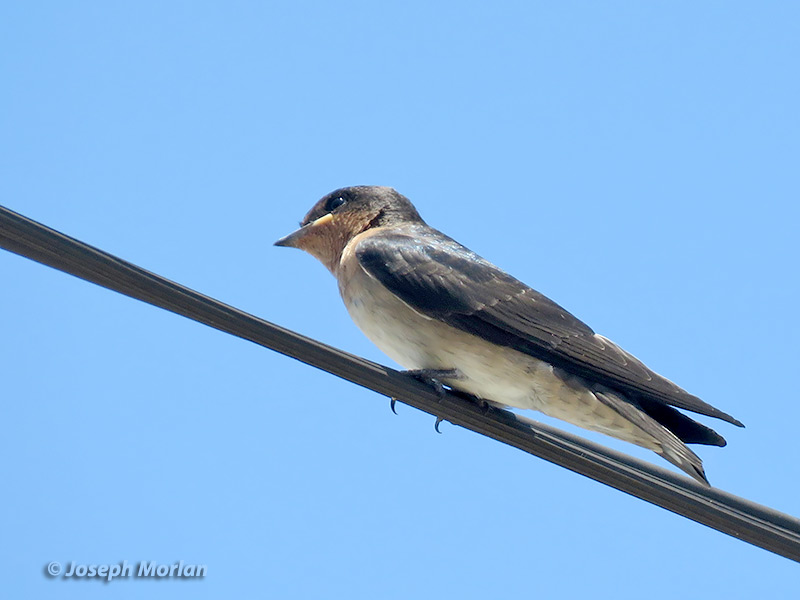


These are juveniles showing the pale gape flanges of recently fledged birds. This is the common swallow in most of coastal New Guinea. Of the four subspecies which occur in New Guinea, H. t. frontalis is the expected subspecies breeding in northern New Guinea. This race was merged with H. t. albescens of southern New Guinea before the latter was described by Schodde & Mason in 1999. They described H. t. albescens as paler below with larger tail spots cf frontalis. Some authors (del Hoyo et al. 2019) split H. tahitica into two species of which our birds become House Swallows (H. javanica). However this split has not yet been adopted by any of the three major world checklists. Canon PowerShot SX60.
References:
del Hoyo, J., Collar, N. & Kirwan, G.M. (2019). House Swallow (Hirundo javanica). In: del Hoyo, J., Elliott, A., Sargatal, J., Christie, D.A. & de Juana, E. (eds.). Handbook of the Birds of the World Alive. Lynx Edicions, Barcelona. (retrieved from https://www.hbw.com/node/1343899 on 31 October 2019).
Gregory, P. (2017) Birds of New Guinea, Including Bismarck Archipelago and Boughainville. Lynx Edicions, Barcelona.
Schodde, R. & Mason, I.J. (1999) The Directory of Australian Birds: Passerines. CSIRO Publishing
Turner, A. & Rose, C. (1989) Swallows & Martins, An Identification Guide and Handbook. Houghton Mifflin, Boston.